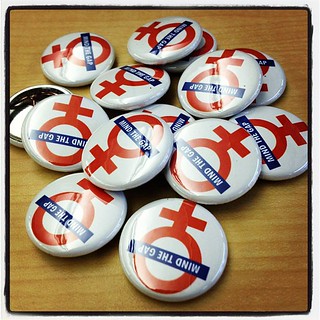When the World Economic Forum (WEF) released its latest Global Gender Gap Report, the internet shouted “The Philippines is the fifth best country in the world for women!” along with “What surprised you?” For me, the former answered the latter. The country whose supreme court has been delaying the implementation of the reproductive health bill providing women with universal access to contraception, fertility control, sexual education and maternal care is “the only country in Asia and the Pacific that has fully closed the gender gap in both education and health”? That can’t be right. “I’ll look at how my country is doing and will let it go,” I thought. But I couldn’t. Despite universal health care, no major sexual and reproductive health rights issues, and low maternal mortality, the Czech Republic ranks 46th in Health and Survival, while the Philippines where “women’s enjoyment of their human and sexual and reproductive rights continues to be obstructed,” according to Dr. Junice Demetrio Melgar, the executive director of Filipino reproductive health NGO Likhaan, ranks first. I had to look behind these numbers.
The Global Gender Gap Index examines the gap between men and women in four categories: Economic Participation and Opportunity, Educational Attainment, Health and Survival, and Political Empowerment. It provides “a framework for capturing the magnitude and scope of gender-based disparities” and “ranks countries according to gender equality rather than women’s empowerment.” The Health and Survival category intrigued me. To measure the gap between women’s and men’s health, the index uses two indicators: sex ratio at birth to “capture the phenomenon of ‘missing women’ prevalent in many countries with a strong son preference” and the gap between women’s and men’s healthy life expectancy.
Using the ‘missing women’ phenomenon as an indicator of gender equality regarding access to health care raises eyebrows. This phenomenon might be a reflection of cultural or political issues in a country, but is hardly a global indicator of access to health care. Its implementation in the report is controversial, too. By choosing to use the “normal” sex ratio at birth, which is 1.06 males for every female born, and disregarding that the ratio can naturally vary (UNFPA), the WEP has arbitrarily decided to punish countries for every one man above the 1.06 ratio and reward countries for every one man “missing.”
For the second indicator, healthy life expectancy benchmark is set to 1.06, ratio based on the standards used in the UN’s Gender-Related Development Index, which uses 87.5 years as the maximum age for women and 82.5 years as the maximum age for men, the report explains. The way this indicator is measured suggests that the goal is not to close the gender gap but rather to switch the gender gap to advantage women (as the previous indicator does). For example, female life expectancy in Russia is 65 (55 for men), in the Philippines it is 64 (59 for men) and in the Czech Republic 72 (68 for men). Yet, if you consult the WEF Global Gender Gap Report, you will find out that when it comes to health and survival, the Czech Republic is the worst place for women out of these three countries. The fact that Russian men die on average 10 years earlier than Russian women signifies serious societal issues rather than equal access to health care for both men and women.
What’s the moral of the story? Looking beyond numbers is extremely important. Charts and reports matter because numbers matter. They provide the easiest – and perhaps only – way to compare all the countries in the world. But the choice of indicators must reflect what it attempts to measure. As WEF says, their report “has been widely used by numerous universities, NGOs, researchers, media organizations, businesses, governments and individuals as a tool for their work.” Imagine the consequences of blindly following an index based on questionable indicators. Are Filipino women equal when it comes to accessing health care? While great achievements have been made, the country still has “a long way to fully respect, protect and fulfill women’s rights to reproductive health,” says Polly Truscott, Deputy Asia-Pacific Program Director at Amnesty International. In claiming that the Philippines has fully closed the gender gap in health, WEF provides a powerful weapon – ‘hard’ numbers and rankings – to those who are against women’s rights advancement.
What are your thoughts on gender gap reports? Are they helpful, controversial, or possibly both?
